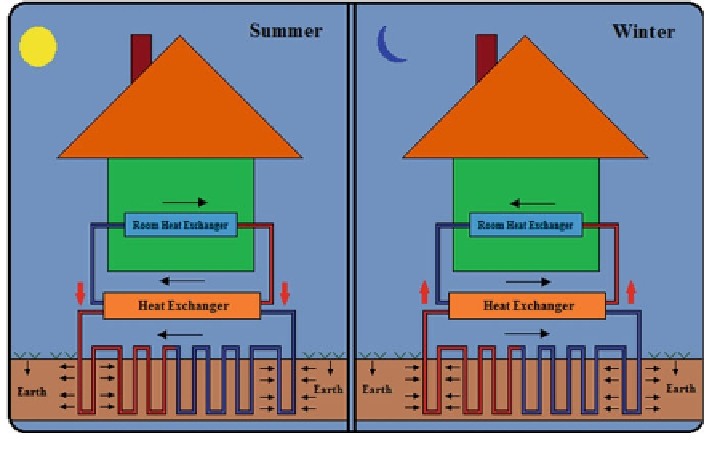Civil Engineering Reference
In-Depth Information
In short, the ATES systems are more energy efficient in the sense that, on an
average, they can reduce the primary energy and natural gas consumption by
50-60 % when compared to the conventional systems. There are some limitations
observed in practice with the operation of the ATES systems, which includes
destabilization of water quality in the underground levels, heat exchanger frictional
pressure losses, scaling of extraction and injection wells, growth of algae, parasitic
or bacterial agents in the heat exchanger surfaces, water table disturbances, etc.
However, these limitations can be well resolved by implementing the value-added
design principles for the energy-efficient commissioning of the ATES systems.
4.2 Borehole Thermal Energy Storage
The another type of seasonal storage system being into practice is referred to as the
borehole thermal energy storage (BTES) systems, which are basically similar to
the ATES systems in operational characteristics, but are different from the ATES
systems by their design configuration and installation. The schematic representa-
tion of the BTES system is depicted in Fig.
5
. The BTES system utilizes the
low-temperature source from the underground for effectively catering the cooling
and heating requirements in buildings. The BTES systems essentially consists
of high-density polyethylene pipe structures being embedded into a series of
boreholes drilled underground, heat exchangers or heat pumps, heat transfer fluid
and other necessary accessories.
Fig. 5
Schematic representation of the BTES system

